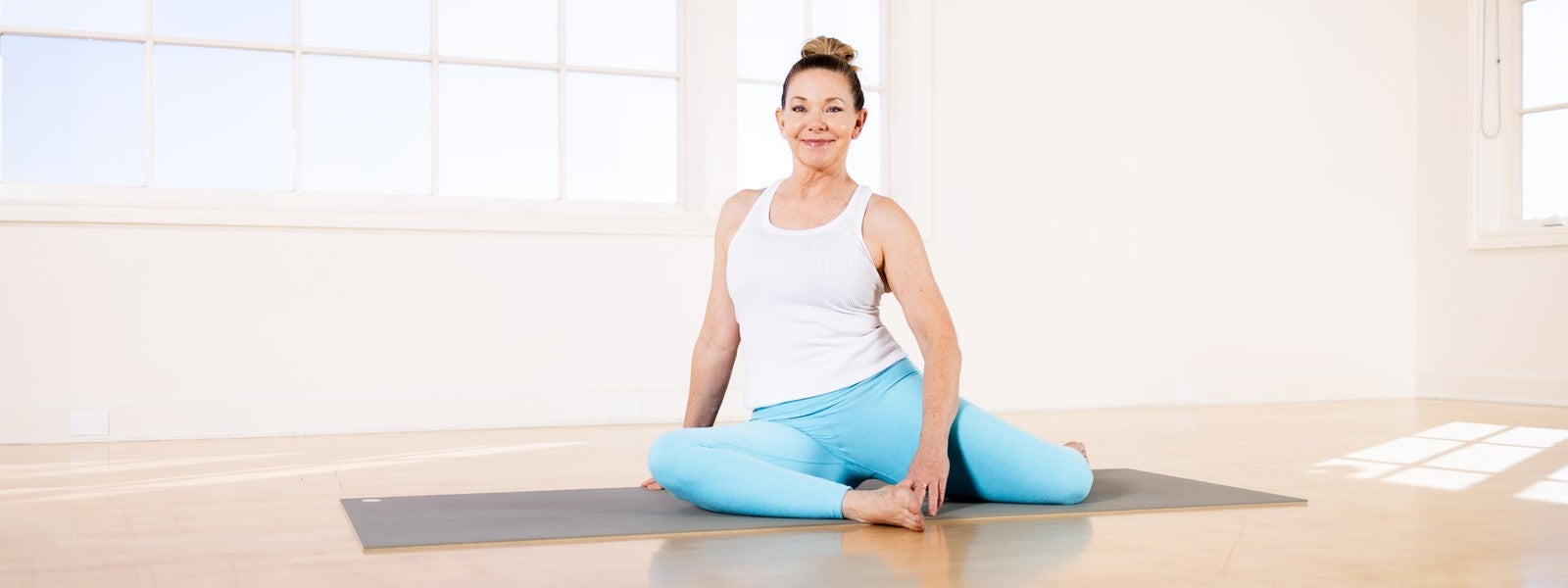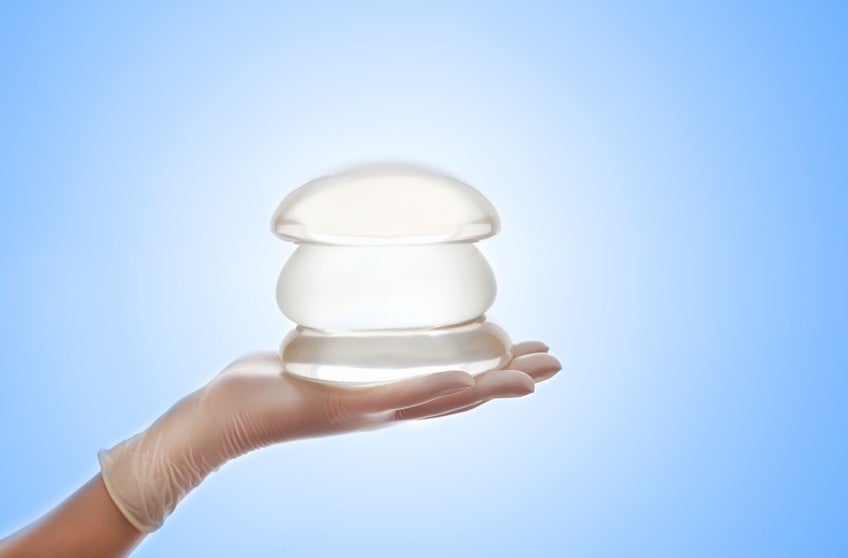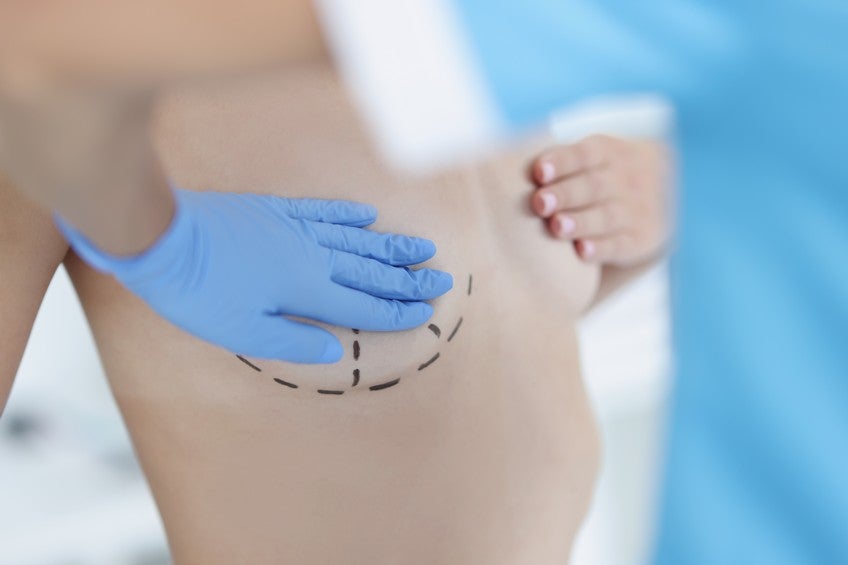
Boobie-Trapped (Part 1)
The opportunity and responsibility of any educator is to share information, knowledge, and experiences regarding a certain subject or subjects for the greater good. For over 27 years, I've been sharing my knowledge of Pilates and movement with a wide audience. I've used my expertise to communicate movement principles and techniques, to help people get out of pain and improve their quality of life. I've shared my own experiences with the Pilates method with thousands of people and will continue doing so as long as I can, proudly with purpose and intention.
I have much more to share, and it's not only about Pilates.
I find value in learning new things, be it about Pilates, cooking, travel, financial strategies, or health/wellness, for example, from many sources. I'm a voracious learner. I also believe in the power of personal experience being one of the best teachers anyone can ask for. Hearing other people's stories about their trials and tribulations or successes can be a powerful tool and deeply meaningful. It can sometimes be that one new element or one piece of information that can catapult a person into a whole new direction and/or help them find a deeper meaning to something they've been inquisitive about or looking for answers to.
In the spirit of education, sharing, and advocacy, knowing what I have to say could help even one person, or possibly many, I’m writing this from my own personal perspective. I want to share my experience with breast implants, Breast Implant Illness, misinformation about breast implant safety, how they’ve affected my life, and how I resourced Pilates and therapeutic/restorative Yoga to help me post breast implant removal surgery. This blog is being written from a place of honesty, integrity, and authenticity. My hope is to help shed some light on this topic, provide information, to help people understand their way around these issues, and to have the conversation.
Please read my full blog on my website: movewithamyhavens.com. But for now in this Part 1 of 2, I’ll be providing an overview of breast implants and how they are placed, what Breast Implant Illness is, symptoms, when and why you should be concerned, when you need a diagnosis, and how my implants were making me sick and affecting my Pilates practice and my life. Part 2 I’ll discuss decision-making around implant removal, picking your surgeon, types of surgeries, pre and post-surgery protocols, healing and of course - movement post-surgery and beyond.
Part 1
What is Breast Implant Illness?
Breast Implant Illness (BII) refers to a wide range of health issues and symptoms after placing implants, especially inflammation, the root cause for disease. BII occurs in both saline and silicone-filled implants. It’s a complex illness that is being talked about more and more. Research is being done every day to provide clear data and evidence to this growing problem, yet there is misinformation and unclear messaging from the FDA about the safety of breast implants and the illnesses resulting from them. BII isn’t yet recognized as an official medical diagnosis, but this is rapidly changing.
This article discusses the scientific evidence of BII in great detail (it’s worth a read): Breast Implant Illness: Scientific Evidence of its Existence
Implants are made of a silicone shell (all implants have a silicone shell no matter what they are filled with). Some people can have strong, negative responses occurring immediately after they are put in, or years later. Not all people will experience problems or symptoms, which adds to the complexity of the diagnosis. Silicone has been shown to bleed through the intact shell and can migrate to the lungs, skin, and extremities, causing incredible problems. Implants can rupture and this is often undetectable. The silicone gel can find its way into lymph nodes, muscles, and other surrounding tissue. If silicone leaches out and into the body, bloodstream, lymph nodes, etc, this can be a life-threatening issue and until detected, is silently poisoning people.
Annually in the U.S., approximately 400,00 women augment their bodies with breast implants for cosmetic reasons and/or for reconstruction after breast cancer. Worldwide, the numbers are closer to 1-2 million women having breast implants.
How do you know if you might have Breast Implant Illness?
If your health is suffering and you’re not sure why, if you have been seeking answers, seeing multiple doctors with no clear direction and you have breast implants, they could be the reason. Breast Implant Illness symptoms can affect various body systems including the endocrine (hormones), neurological, immune, gastrointestinal, detoxification, and metabolic systems. Immune dysregulation and the presence of pathogenic organisms can contribute to autoimmunity through a process known as leaky gut. The symptoms can often share traits with autoimmune and connective tissue disorders.
Receiving a diagnosis can be complicated and some doctors do not know how to offer a true diagnosis. Functional medicine doctors are typically the better source when looking for guidance and direction due to their perspective on finding root causes to issues rather than simply offering medication and/or prescriptions to band-aid ailments. For a person to truly find out if they may be experiencing BII, it often takes multiple rounds of bloodwork to measure hormone levels and toxicity paired with symptoms and a doctor willing to help investigate and help a person understand their situation.
Implants are made with approximately 40 toxic chemicals and contain an array of heavy metals which is why they are known as endocrine disruptors. The body doesn’t recognize implants because they are foreign objects. Inflammatory, carcinogenic, cytotoxic, and neurotoxins poison our fragile endocrine system (thyroid/adrenals and others) and poison our thymus gland and our immune system, our gut health and create toxicity in our organs and body.
Understandably, the body starts to defend itself and the immune system takes a huge hit. The body mounts a war trying to protect itself. This causes immune issues and dysfunction and eventually autoimmune symptoms and diseases like Hashimoto’s, lupus, rheumatoid arthritis, and scleroderma to name a few.
Breast implants can be placed over the pectoral muscle or behind it. As soon as the implant is placed, the body begins forming a connective tissue 'wrapping' or capsule around it. This capsule can sometimes adhere to ribs and other muscle tissue in and around the chest wall or impinge nerves, often creating pain, discomfort, and distortion of appearance and/or size. This issue, known as capsular contracture, can over time become debilitating enough for a person to want to go through another surgical procedure to have the implant repositioned, replaced, or removed altogether. Although capsular contracture can be a slow-developing issue, it's not advisable to ignore it. It will become very painful and eventually need attention.
Here’s where the debate and discussion get more delicate and to some, very challenging to hear, but it does need to be talked about.
The capsule is also where certain breast cancers are being detected. In March 2017, the FDA issued a warning confirming that breast implants cause BIA-ALCL cancer (breast implant associated - anaplastic large cell lymphoma) which is a cancer of the immune system. This is deeply upsetting, as you can imagine. Women who have breast cancer and who go through a mastectomy and who opt for implants for a rebuild/reconstruction are risking getting another type of cancer from placing the implants. A double-edged sword. A booby trap, a potential ticking time bomb.
For a full description of the cancers and recent FDA findings, please follow this link: Healing Breast Implant Illness
Symptoms and Signs of Breast Implant Illness
Here is a short and partial list. These can affect everyone differently. I experienced all of these and many more on the complete list.
- Extreme/chronic fatigue
- Joint and muscle pain
- Inflammation
- Weight gain or loss
- Tingling and numbness
- Brain fog, memory, and cognitive problems
- Headaches
- Breathing problems
- Sleep disturbance
- Rashes and other skin problems
- Dry mouth and eyes
- Anxiety and depression
- Gastrointestinal problems/IBS
- Swollen lymph nodes
- Thyroid, Adrenal, and Autoimmune dysfunction/disease
Please click HERE for the complete list.
Implants are not lifetime devices and it’s suggested that people replace them every 10 - 15 years making it sound as easy as going to get a manicure or pedicure. Replacement is expensive and can sometimes be complicated. Often the replacement procedure is not defined by surgeons in detail, nor is the possibility of complications outlined clearly. People are not given the full picture of what goes into replacing or explanting. To explant is to remove the breast implant device completely, including the scar tissue capsule. I’ll be going into more detail about this in Part 2.
Now for a bit of my story:
I had my implants placed in 2013 as a personal choice for an aesthetic. I’ve always been a small-chested woman and I had wanted implants for years, so I made the decision to augment my body. I had three consultations (always a good idea). Each surgeon told me something different. The first surgeon wanted to place a D cup sized implant in. Not for me thank you. The second surgeon was not much help at all. The third surgeon seemed to understand completely, that I just didn’t want to look flat. You have great shape, but no volume. Exactly! I agreed to the smallest implant on the market to give my chest just a bit of volume (235 cc). His words though: Are you sure, most women complain that they wish they’d gone bigger. A red flag that I’ll discuss later. This was going to be a big change for me, even though I chose the most modest size. I was pleased with my decision and set the date for surgery. April 3rd, 2013.
My plastic surgeon did advise me that implants were not lifetime devices and that I would most likely need to exchange them around 10 - 12 years. He also told me I could develop capsular contracture or they could rupture or leak. When I asked him about that, he basically said, that’s not good, but don’t worry, that rarely happens. I took his word for it. He was the surgeon after all and I believed him. He was performing about 10 breast augmentations a week at that point. I liked him and trusted him. Wasn’t I supposed to?
If there is one major point I want to make, I’ll mention this now. We MUST be our own advocates in ALL of our health decisions. It’s personal, but our choices are our own. I was about to really put this to the test.
I felt fine for the first few years and liked them, but around 2017, I started noticing some changes in my health that seemed to have come out of nowhere. One of the gifts Pilates has given me is Awareness. I have such awareness of my body that I listened, paid attention to my intuition, and asked myself some questions about what I was feeling. FATIGUE was the main answer, deep fatigue. Like wanting to go back to bed an hour after waking. That wasn’t normal for me at all. I was also hitting the perimenopause timeline so I thought it could be that.
I got some bloodwork done and was shocked to hear the results: You have Hashimoto's. I wasn't familiar with that then, but I am now. It's an autoimmune disease. My thyroid was basically non-functioning and I was not producing much estrogen, progesterone, or testosterone. My gut was also a mess. We began treatment with hormone therapy and I did a 6-week nutritional rebalance. Although I started to feel a bit better, I would plateau every 3 months or so, then crash again. It became a vicious cycle, required routine monitored bloodwork, and was very expensive.
Meanwhile, inflammation started to set in, weight gain, numbness and tingling in my hands and arms, joint pain in my pelvis, legs, and shoulders, tinnitus, and brain fog! I was also noticing heart palpitations and even had a heart monitor for a week to check to see if I had something more serious going on. Luckily, I did not and was offered a cortisone management supplement which only slightly helped. My mammograms were fine, but an ultrasound showed a suspicious spot on in my left breast. This made me nervous, of course, and my doctor ordered another ultrasound. It was clear, but I wasn’t satisfied so I requested an MRI just in case they missed something. Nothing showed up. What was wrong with me?! Why was I feeling so unwell?
I had also become reactive to many foods so choosing the right things to eat was a chore and frustrating. It seemed like nothing I was doing was making me feel any better. Moving my body was not feeling good most of the time. My joints hurt, I was losing mobility (connective tissue problems), was dealing with lots of inflammation, and was still directing for Pilates Anytime, managing and teaching in my studio, caring for my mother, traveling to teach, and living as a single woman doing all of this alone.
For years, these symptoms and so many more (I experienced over 40 from the full list I included earlier) were just part of my every day and I was doing my best to manage them. I was also experiencing an enormous amount of grief in my life from the sudden death of an older brother in December of 2019, caregiving for my mother, COVID, massive job shifts, and eventually the death of my mother. I leaned heavily into my Pilates fundamentals, breathing, and therapeutic Yoga to help manage the anxiety, stress, and depression I was experiencing. I’d also been given another new diagnosis of Epstein Barr. I felt lost and in a body that was not supporting me. I was getting pretty scared and I felt like crap. Most of the time, all I wanted to do was lie on the floor, breathe, and do somatic movements. Pilates as I knew it didn’t feel good. The capsular contracture had gotten so intense in my right breast and was pressing on nerves causing a lot of pain. Working out hurt and wasn’t fun.
In December of 2022 during an evening Instagram scroll, I came across a post or a story and to this day I can’t remember what or who it was, but it was something discussing Breast Implant Illness. THIS, THIS must be what’s going on with me!!
I went down a rabbit hole that night, thankfully! I learned SO much. I spent hours reading and found two primary Instagram accounts, a website devoted to BII, and a private Facebook group that accepted my request to join. All were resources that I began to utilize to inform myself about Breast Implant Illness, what to do about it, what surgeons performed the correct procedures, etc. Learning about this helped me understand the severity of the issue and the complications that implants had caused me, my health, and my body. I was coming up on the 10-year marker to replace them, but my health issues and having the capsular contracture were evidence that steered me away from that and toward the decision to have my implants removed.
I’ll get into more detail in Part 2 about choosing the best surgeon because specific criteria need to be met, and more about choosing the best team for healing. My local functional medicine doctor was good, but many times I had to ask her for direction about my BII issues; she should have been able to detect and direct me much earlier in the game. I feel like I lost some time and quite a bit of money circling and suffering. Being my own advocate, I started seeking out professionals better suited for my needs and thankfully found them.
I began my search to find the best surgeon as well. I found a surgeon in Scottsdale, AZ who specializes in explant procedures and now devotes his entire practice to this. He believes in BII and no longer does implant procedures. This was the surgeon for me! Why AZ and not Santa Barbara where I live? I contacted the surgeon who placed my implants back in 2013, but he doesn’t believe in BII and wouldn’t do the type of surgery needed to have them safely removed. Not my surgeon! I have family in AZ and would need to lean heavily on them during the first week of recovery. This is a tough one to do alone. I made an appointment for a consultation and then set a surgery date.
Knowing I was going to have the implants removed started bringing up lots of heavy emotions and feelings. It’s an expensive surgery and I’d need several weeks off from teaching. The bigger part was the anxiety around seeing my new old landscape, having large scars, going back to my former flat chest, and the possible challenges ahead with detoxing the poisons that had taken over my body. How long would that take? Will I be healthy again? Removing implants and scar tissue is quite invasive. But, my health and well-being mattered the most. Just as important was relearning my chest, my pectorals, my shoulder girdle, and my biomechanics - returning to my Pilates and movement practice with grace, patience, and love. I needed to learn how to take a deep breath again because I hadn’t been able to breathe well for years. Implants had affected so many aspects of my life and my wellness. Friday, October 27th, 2023, couldn’t come soon enough and I was ready.
(Click HERE for Part 2).

